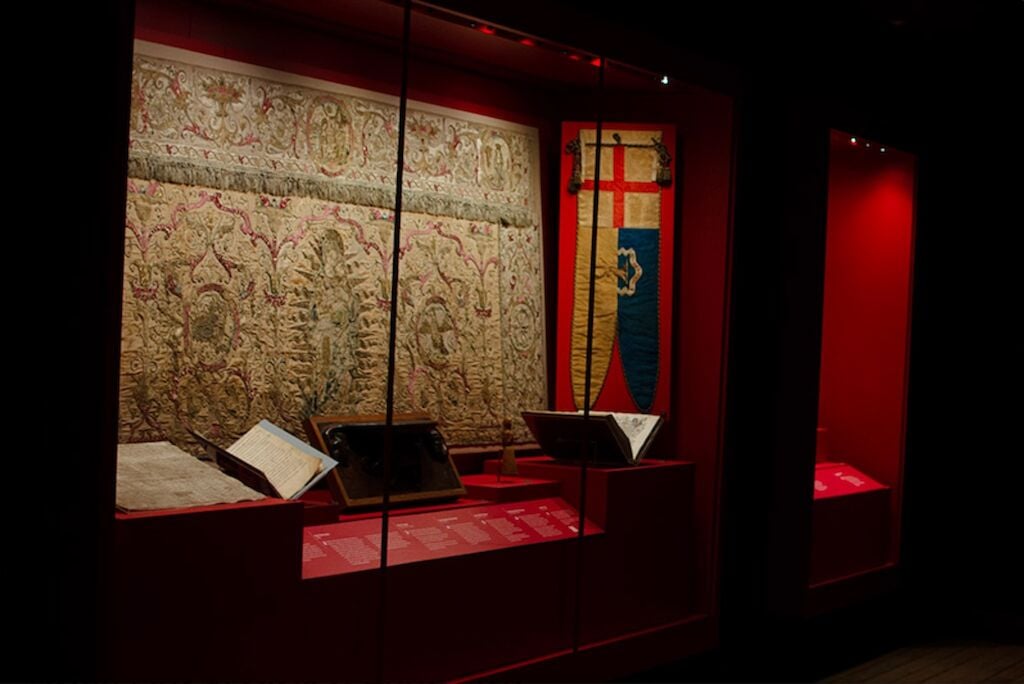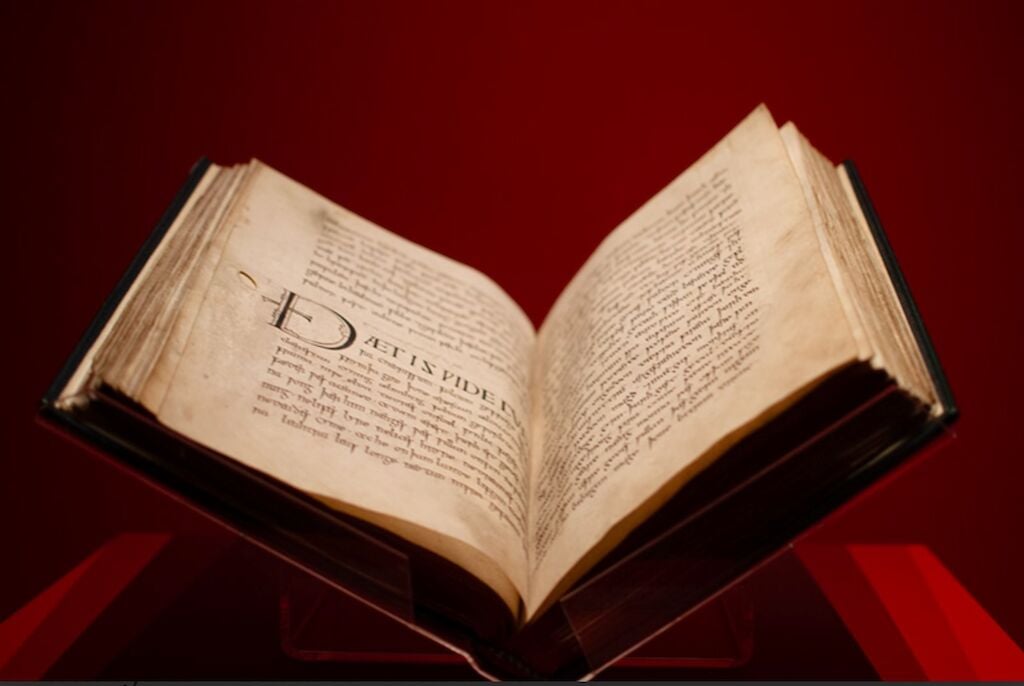Connecting visitors with their heritage
From the cathedral’s extensive historic library and archive collection, visitors can expect to see the cathedral’s foundation charter dating back to 1050; Exon Domesday, the only surviving source for the Great Domesday Book, and the only surviving examples of medieval wax votives in England.
The new space is part of Exeter Cathedral’s 2020s Development Appeal Project, which is supported by The National Lottery Heritage Fund alongside The Wolfson Foundation, Garfield Weston Foundation and The Julia Rausing Trust. The project aims to connect visitors with their heritage while also making sure that the historic building is preserved for future generations.
One of the jewels of the exhibtion is the 10th century Exeter Book which is considered to be the oldest surviving book of English literature in the world. Such is its importance, the Exeter Book is inscribed onto the UNESCO Memory of the World Register.
Find out more about the UNESCO Memory of the World register
New works and sensory experience
Alongside the historical items in the exhibition, the space also showcases a series of new works created throughout Exeter Cathedral’s series of community projects.
Four newly crafted misericords – or ‘mercy seats’ – featuring intricate designs created by winners of a creative competition and hand-carved by woodcarver William Barsley, are on public display alongside a new triptych textile artwork, inspired by themes of birth, marriage, and death, co-created by artist Davina Kirkpatrick and members of the local community.
Upon arrival to the exhibition space, visitors will also hear a dedicated soundscape. Working alongside local schools and community groups, Soundscape Artists Nicole Redfern and Daniel Harvey created a bespoke composition using the sounds of the historic building to support visitors in engaging with their sensory experience.
Find out more about the Treasures Exhibition at Exeter Cathedral
More information on Exeter UNESCO City of Literature









